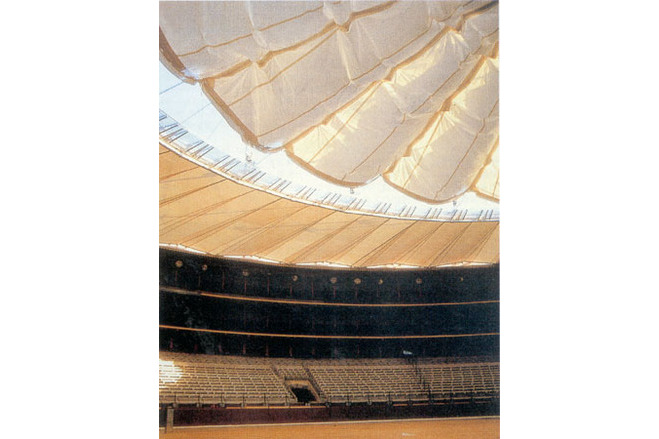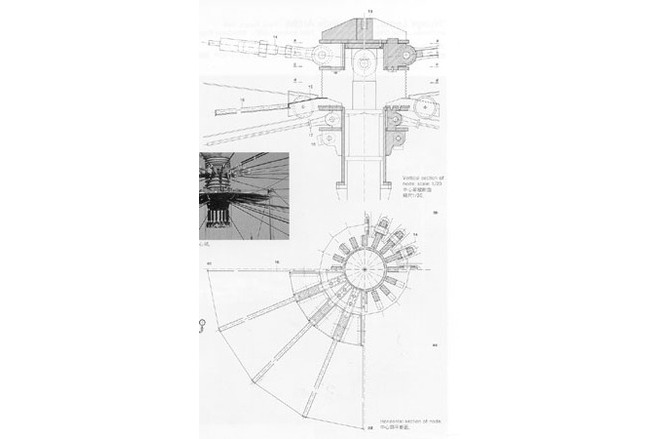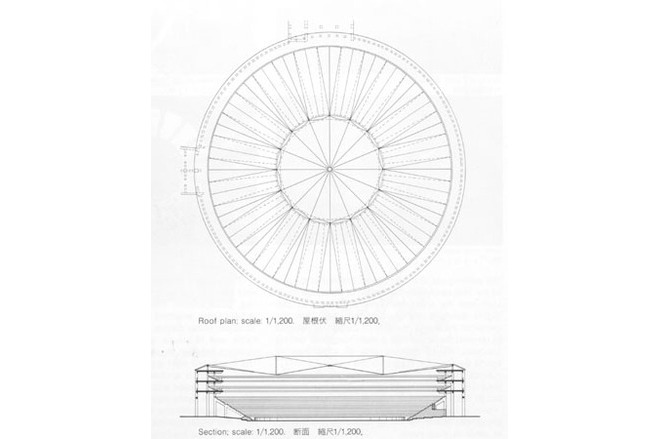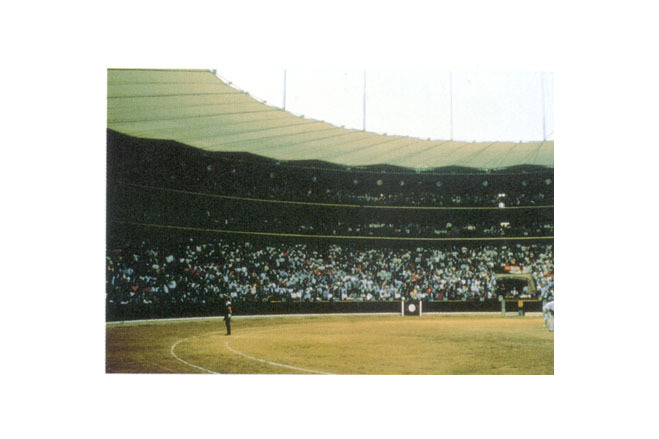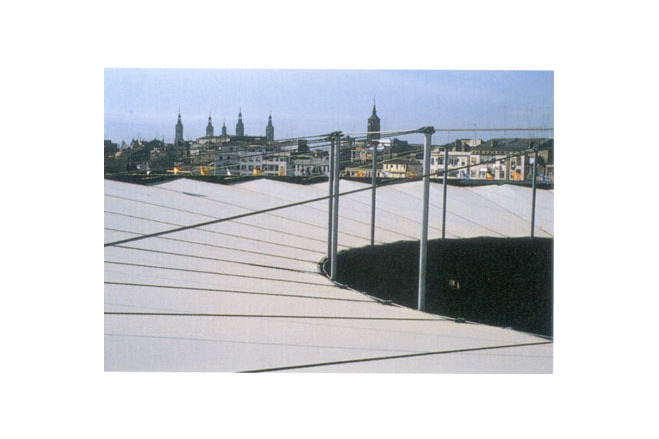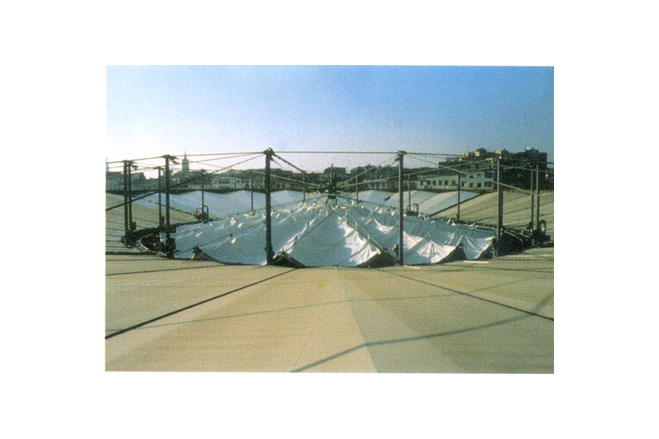Bullring at Zaragoza
General information
-
Location address
Zaragoza
-
Location country
Spain
-
Year of construction
2000
-
Function of building
Stadia
-
Climatic zone
Mediterranean - mild winters, dry hot summers
-
Number of layers
mono-layer
-
Type of application of the membrane
covering
Description
The 18th-century bullring at Zaragoza in Spain is circulair in plan and has a diameter of 100 metres. Here, the Schlaich Bergermann team covered the grandstands with a permanent membrane roof having an outer diameter of 83 metres. Within this, the bullring proper is covered by a retractable inner roof 23 metres in diameter. The structural system of the outer part is based on the familiar theme of the spoked wheel. The rim consists of a steel box-section compression ring, while the 16 spokes are as usual prestressed cables. These are anchored at their inner ends to two cable tension rings, situated one above the other and held apart by vertical tubular struts. There are thus two sets of cables radiating from the inner rings to the top of the grandstand: one sloping down and the other sloping up. The membrane of the permanent, annular roof is draped over the lower set.
The retractable inner roof is located entirely within the "hub". The upper and lower tension rings serve as "rims" for two further "spoked wheels" systems meeting at a single common hub above the centre of the bullring. The retractable membrane is draped over the lower cables of this inner system. When the roof open, it hangs bunched up in the centre. When the roof is to be closed, 16 small electric motors draw the bottom edge of the membrane out to the lower rim to form a circulair tent. Once the edge has been secured to the rim, a jack at the top applies the prestress necessary to establish rigidity and prevent flutter. Visitors greatly enjoy the magnificent spectacle of the opening and closing of the roof which has been likened to the unfolding and closing of a flower bud.
In 2000 the fabric of the retractable roof was substituted, with new PS PVC, due to the mechanical damages, and the original mixed pattern design was changed to a radial one, under the direction of J. Monjo and J. R. Gámez
[The Art of Structural Engineering: The work of Jörg Schlaich and his team, Alan Holgate, p136,137]
Description of the environmental conditions
Material of the cover
-
Cable-net/Fabric/Hybrid/Foil
Cable
-
Type (code)
Polyester/PVC
-
Material coating
PVC
Main dimensions and form
-
Total length (m)
83
-
Total width (m)
83
Duration of use
-
Temporary or permanent structure
Temporary
-
Convertible or mobile
Mobile
-
Design lifespan in years
00-05
Involved companies
-
Architects
schlaich bergermann partner
-
Contractors
Lastra & Zorrilla - Arquitectura Textil
-
Suppliers
SERGE FERRARI
Editor
-
Editor
Marijke M. Mollaert


